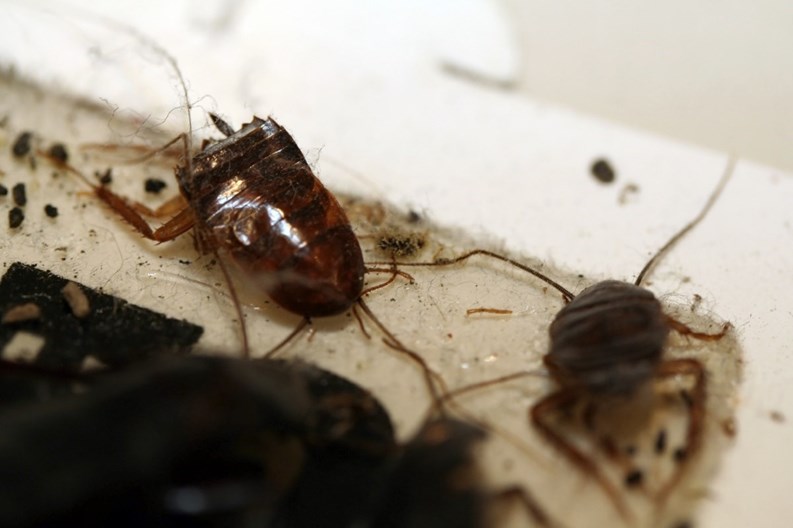Few things inspire more disgust in an apartment owner than an infestation, be it bugs, rodents, or other vermin. Unfortunately, pests are often part-and-parcel of life in a sprawling metropolitan area. Roaches, mice, rats, ants, bedbugs and the occasional invasion of centipedes are some of the more common unwelcome "guests" in New York City buildings.
While different seasons often present different pests—and call for different pest-control strategies in multifamily buildings—the truth is that in New York City, which has a relatively temperate climate, there's not a specific "season" when a given pest descends on the city en masse. That said, maintaining a thorough, consistent extermination program throughout the year is an essential part of staying one step ahead of the invaders.
Extermination
In New York City, a vermin problem is often not confined to just one building or apartment—it spreads out to encompass an entire community. This means that even if you live in a well-kept building, there's a chance that pests will try to move in on you if they gain a foothold at a neighbor's.
Most experts recommend a monthly maintenance visit from exterminators to ensure that any potential problem is kept under control.
"At the minimum a once a month visit is usually necessary," says Greg Zarek of Metro Pest Control Inc. in Glendale. "For certain buildings, weekly visits may be needed."
In these buildings, it's often necessary to account for eggs, larvae and adult critters that may have escaped the first treatment. "Initial service knocks down the population," says Zarek, "and then the eradication will need to be maintained."
Nana Kojo Ayesu of Kojo's Pest Elimination Company in the Bronx, agrees, saying that "once a month for monthly maintenance" is a good rule of thumb when it comes to keeping the pest population in check.
Not all pest control companies are the same, so a little research can make sure that you are getting the best available service. Look for companies who stand behind their work. According to the experts interviewed for this article, reputable pest control companies offer guarantees of their services, often coming back to readdress problems if they're not knocked out after just one treatment.
Eliminating Invitations
One of the most effective deterrents to multifamily pest infestation is regular maintenance. Making sure that pests do not have ways to get in and places to live is the first line of defense, says Ayesu. "The first level of protection is physical, the second level of protection is sanitation, and the third level of protection is chemical. Step one is to get an inspection of the building, which will speak directly to the problems."
After inspecting the building and identifying structural issues or features that could contribute to a pest problem, it's time to address those issues, says Zarek. "One of the best things to do is to seal up any openings, starting from the exterior of the building and moving into each apartment. Exclusion is always the best method, meaning that if they can't get in, you don't have a problem."
And just because a hole is tiny doesn't mean that it's not likely to become a highway for unwanted wildlife. According to Ayesu, "A rat can get through a hole the size of a quarter, and a mouse can get through a hole the size of a dime," so sealing up entry points is vital, no matter how inconsequential they may seem.
These pests are looking for certain things, which is why they invade our homes at all. So, it makes sense to deny them what they seek, says Ayesu. "A lot of times, if they are inside buildings their activity depends on food sources — they travel between locations to obtain food and security."
One of the biggest factors contributing to the relative ease of entry is the structure itself, says Ayesu. "It is usually the condition of the building. A lot of cabinets, once they are installed, are not sealed from the outside, and if moisture gets in, they can wilt." That leads to gaps, which in turn offer tempting nooks and crannies for all manner of invaders.
To address the access issue, "We call [what we do] IPMs—Integrated Pest Management," says Joe Ippolito, technical director of Eastern Pest Management, based in Newburgh. "We try to exclude the mice before we trap them, for example."
The next step in avoiding infestation of any kind is sanitation. "Obviously keeping the place clean will help," says Zarek. "Otherwise, it's harborage, giving them a place to live and a place to eat. So if your place is dirty, they will come to you first, and they will likely stay with you. Don't get me wrong, extremely clean places get pests also, but it is usually due to a less-clean adjoining neighbor."
"If they can't obtain food, it's over—they die," says Ayesu. "Don't let counters stay wet, because that attracts them too. Except for mice—mice don't drink water, because they get all their water from food."
Step three is the eradication of existing populations, and the regular maintenance from the professionals.
Beyond Gross
Aside from the obvious "fear factor," vermin have long been associated with the spread of disease and the aggravation of health issues. Just because hardly anybody gets bubonic plague anymore doesn't mean that today's pests are any less vile and disease-ridden than those of yesteryear.
For example, says Zarek, "One of the things that roaches aggravate is asthma," thanks to their shedding skin and (even more unsavory) their droppings. Ayesu agrees, adding that "The dander from rats and mice also contribute to upper respiratory ailments."
Another factor that contributes to the health concerns is the availability of fresh air. When homes are sealed for protection against the cold, or in an effort to conserve energy, the same air can circulate without being refreshed or cleaned. "There is very little air transferal in some homes, and what gets into the apartment tends to stay there, in the way of airborne elements," explains Ayesu. If what stays there includes a lot of rat dander and roach droppings, you can imagine the health consequences for everyone—but especially for the very young, the elderly, and anyone with a compromised immune system—are less than terrific.
Seasonal Factors
One of the unsung benefits of living in a temperate climate like New York City's is that the seasonal insect fluctuations are largely kept to a minimum, says Ayesu. "The temperature difference in most New York City homes doesn't vary more than about 15 degrees between seasons, with the exception of a few days when the boiler adjusts. This variation isn't really enough to affect the insect or pest populations that live inside them."
"The same protection that we are afforded in the city are afforded to the pests," continues Ayesu. "If the environment outside the city is conducive to pest infestation, they will come in. Rats can scale a wall and enter into an open window. They can even climb a fire escape. Rats are very resourceful and have been around for thousands of years. It's said that one pair of rats with no enemies can produce around 700 young in one year."
Getting rid of these pests is largely the same to a professional, regardless of the time of year, in fact. "Treatment is going to be the same whether they infest you in the spring, summer, fall or winter," says Zarek.
Prevention, on the other hand, can take different forms depending on the time of year. Here are a few seasonal tips from Terminex:
Summer Pest Control:
Flies, mosquitoes, silverfish, millipedes, centipedes, termites, cockroaches and honey bees can invade our homes during the warm summer months
• Replace standing water, such as bird baths, at least once a week
• Remove unnecessary vegetation or trash from around your home
• Screen windows, doors and other openings with mesh that is at least 18x18 strands per square inch
• Keep doors and windows shut as much as possible
• Clean your kitchen counter areas and keep food in sealed containers
Winter Pest Extermination:
The key to keeping your home pest-free during the dead of winter is to inspect for pests that are trying to find a safe, warm place to hide during the cold months
• Seal cracks, crevices and areas where utilities enter the building
• Repair leaking pipes and other areas where excess water may build up
• Clear clutter in areas like the garage or basement that could harbor pests
Spring and Fall:
• Any grass or birdseed that is stored over winter in your garage should be stored in a rodent proof container to prevent harborage
• Ensure weather stripping around doors and windows is in good condition to prevent insect and rodent entry
• Rake leaves and other organic debris away from the perimeter of your home—fleas will rest in these areas, jump onto you or your pet and make their way into your home
In addition to different prevention schedules, the visible presence of some pests may be heightened in different seasons as well—like cockroaches for example, says Ayesu.
"As far as German cockroaches and so-called 'brown bandits,' there is no distinct season when people notice them more. American cockroaches—also known as water bugs—are a different story. When the humidity is over 80 percent, they tend to make themselves known."
Zarek agrees, adding that, "Late summer an early fall are when roaches tend to come out more."
So why do we tend to see more creepy-crawlies in our apartments when the temperature drops? According to Zarek, they're there for the same reason we are: food and shelter. Some pests simply opt to stay inside rather than venture out to forage for food. "People tend to see pests more when they winter in a building for warmth. That applies to rats and mice, too."
Whatever your feelings on animal rights and protection, it's probably safe to say that you don't want a horde of four- or six-legged interlopers in your living space. Whether you're someone with allergies getting sniffly from a family of rats setting up house in your walls, or someone who simply can't stand the sight of one of those big, greasy-looking "water bugs" in your tub first thing in the morning, the solution to a pest problem is simple. It starts from the outside in.
Denton Tarver is a freelance writer and teacher gardener living in New York City.







Leave a Comment